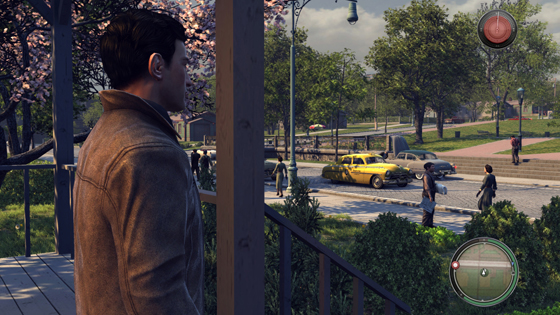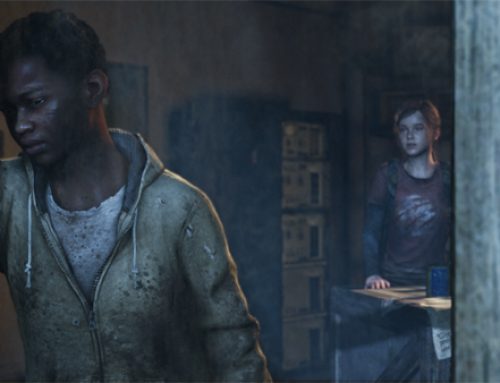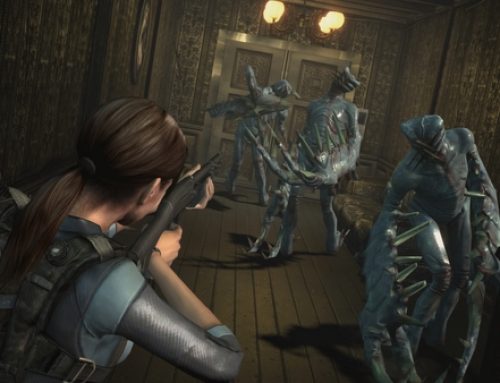
"Mafia II" does an excellent job at capturing the feel of a particular era. The problem is it's confused about what era it's aiming for.
Even casual readers of video game magazines and blogs are likely all too familiar with glowing previews for in-progress games that turn out to be average, at best. It’s easy to look upon such previews in media chock full of game advertisements with suspicion. But my experience with “Mafia II” makes me think previewing a game is a bit like going over to an untidy friend’s house. If you visit for an hour, things look clean and tidied up. If you stay longer and wander a bit, there’s more time to notice flaws like closet doors about to burst open, or rodent-sized dust bunnies lurking under furniture.
Such was my experience with “Mafia II,” a game whose setting of Empire Bay initially came off as a “Grand Theft Auto”-style metropolis modeled after New York City in the 1940s and ‘50s.
Though “Mafia II” (rated M, $60 on Xbox 360 and PlayStation 3, $50 on PC) has all the trappings of an open-world game – a large, detail-rich city, GPS-style navigation, minimap, multiple criminal factions and several dozen different types of vehicles – it’s a linear experience.
As in a “Grand Theft Auto” game or Rockstar Games’ recent “Red Dead Redemption,” you’ll be carrying out a number of satisfying, multipart missions that advance the plot. But, in a departure from the styles of those games, that’s about all you’ll be doing. Unless you want to invest hours driving around looking for wanted posters, there’s nothing to do in “Mafia II” beyond playing through the single-player story.
Despite the developers’ obvious pains to craft distinct landmarks and neighborhoods, many of which look fantastic, Empire Bay doesn’t feel like a distinct character in the game the way “GTA IV’s” Liberty City did. The giant city with nothing to do makes it feel more like you’re wandering around a movie set rather than a bustling town filled with millions of people.
What story there is centers around Vito Scaletta, a wounded World War II hero who, along with his galoot of a buddy Joe, joins up with the mob to help pay off his late father’s debts only to wind up in over his head. The game’s 15 missions careen wildly from insufferable to excellent, but finish on an incredibly strong note. The last three or four chapters are easily the best part of the game, but the experience of getting to them is fraught with such tedious chores as ferrying around drunken mobsters who sing along to the radio and way too many fistfights that all play out the same.
You’ll be spending a lot of time behind the wheel in “Mafia II.” Seemingly every mission requires you to drive to the other side of town. After five chapters or so, you’ll be ready to rip your ears off upon hearing the Andrews Sisters’ “Rum and Coca-Cola” for the umpteenth time.
Then, a funny thing happens. Vito has to leave town for a while, and the calendar advances to the 1950s. When Vito’s adventure resumes, we’ve rushed headlong into the era of rock ‘n’ roll and classic cars. Flying over sun-dappled hills in a chromed-out ride while Fats Domino’s “The Fat Man” plays over the radio beats the pants off of driving a beat-up, drab sedan cautiously around a snowy corner in 1945.
That said, “Mafia II” isn’t exactly a stickler for historical accuracy. While it’s true video games aren’t made for people who remember the 1940s and ‘50s, it’d be nice to see more attention paid to period detail. Even I, born in the mid-‘70s, know that Buddy Holly, the Chantels and the 1957 Chevrolet Bel Air, whose design is reflected in several of “Mafia II’s” cars, didn’t come on the scene until 1957. “Rave On” in as out of place in “Mafia II’s” “1951” is as “Smells Like Teen Spirit” would’ve been in “Grand Theft Auto: Vice City’s” “1986.”
What’s weird about this disconnect is that there’s an easy solution. The years between 1945 and 1951 elapse because Vito’s sent off to prison for 10 years, then let out early for good behavior. If “Mafia II’s” designers have such a fetish for 1957, why not just send Vito away for 12 years and be done with it?
For the most part, it’s easy to forget you’re playing in “1951” and just pretend the game is set in the latter part of the decade. Fans of the movie “Goodfellas” or mobster fiction in general should find plenty to like in the game’s final acts. Though it adheres to Mafia-movie conventions in a broad sense, it’s mercifully free of cringe-inducing buzzwords like “fuhgeddaboutit” and “family.”
When you’re not driving around the city, rocking out to the superb soundtrack, you’ll be spending the bulk of your time either sneaking or shooting. The missions do an excellent job of alternating stealth gameplay with shooting from cover and the firefights felt quite realistic when I played the game on the “hard” difficulty. Often, one or two shots were enough to kill Vito, a nice change of pace in an era of gaming when so many protagonists are glorified bullet sponges.
You’ll get about a dozen hours of gameplay and story for your $60, about a third to half of which is excellent. The other half is a mixed bag, with the aforementioned drunk-ferrying mission and the one preceding it being the only two truly awful parts. With the game having little replay value, even fans of the genre might want to sit on their hands until the game can be had for $30 or $40.



